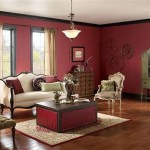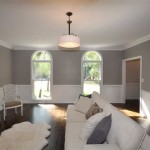Living Room Multiple TV Setup
A growing trend in home entertainment involves incorporating multiple television screens into a single living room. This setup offers a variety of benefits, from simultaneous viewing of different programs to enhanced gaming and social experiences. However, achieving a seamless and aesthetically pleasing multi-TV setup requires careful planning and execution. This article will explore the key considerations for implementing a successful living room multiple TV setup, covering aspects such as screen placement, cable management, and audio solutions.
Screen Placement and Size
The placement and size of the televisions are fundamental to a successful multi-TV setup. Careful consideration should be given to the room's layout, seating arrangements, and the primary viewing angles. For instance, if the main purpose is watching different sports simultaneously, positioning the screens side-by-side might be the most effective configuration. This allows viewers to easily switch their focus between games. Alternatively, if one screen is designated for primary viewing and others for supplementary content or ambient displays, a hierarchical arrangement with a larger central screen and smaller flanking screens can be implemented.
Screen size selection is crucial. Overly large screens in a smaller room can feel overwhelming and create viewing fatigue. Conversely, smaller screens might not provide a satisfactory viewing experience, especially for those seated further away. Measuring the viewing distances and considering the room's dimensions are essential in determining the appropriate screen sizes.
Mounting the televisions on the wall often provides a cleaner and more space-efficient solution compared to placing them on stands. This also allows for greater flexibility in positioning the screens at optimal viewing heights and angles. When wall-mounting, ensure the chosen mounts are compatible with the television models and can support their weight. Adequate spacing between screens should also be factored in to avoid a cluttered appearance.
Cable Management and Connectivity
A significant challenge with multiple TV setups is managing the numerous cables required for power and signal transmission. Visible cables can create a messy and distracting environment, detracting from the aesthetic appeal of the living room. Therefore, implementing a robust cable management strategy is paramount. Concealing cables within walls or using cable raceways and covers can significantly improve the overall appearance and create a more organized space. Wireless connectivity options, such as streaming devices and wireless HDMI transmitters, can also minimize cable clutter.
Ensuring each television has access to the desired content sources is another key consideration. This may involve utilizing a matrix switcher or a distribution amplifier to distribute signals from various sources, such as cable boxes, gaming consoles, and streaming devices, to each television. Planning the connectivity infrastructure in advance will prevent complications during installation and ensure a smooth, functional setup.
Using a universal remote control can greatly simplify managing multiple devices. This allows users to control all connected televisions and sources from a single remote, eliminating the need for multiple remote controls and streamlining the user experience. Investing in a programmable remote with a user-friendly interface will enhance the convenience and overall enjoyment of the multi-TV setup.
Audio Considerations
Managing audio in a multi-TV environment can be complex. Simultaneous audio from different sources can create a cacophony of sound, diminishing the viewing experience. Several strategies can be employed to address this issue. Using wireless headphones for individual viewing allows each person to enjoy their chosen program without disturbing others.
Alternatively, dedicated soundbars or speaker systems can be connected to each television, providing localized audio. However, careful placement and calibration are necessary to prevent sound bleed and ensure optimal audio quality. Sound absorbing materials, such as rugs and curtains, can also help to minimize sound reflections and improve the overall acoustic environment.
For a more immersive and integrated audio solution, consider a multi-zone audio system. This allows for independent audio control in different areas of the living room. Each television can be assigned to a specific zone, enabling users to enjoy distinct audio experiences simultaneously. This setup requires more complex wiring and configuration, but offers the greatest flexibility and control over the audio environment.

Multiple Tvs Modern Family Room Cleveland By Xtend Technologies Houzz

Ready For Some Unique Custom Tv Installation Ideas Dtv Installations

Multi Tv Setup In Finished Basement Mancave

Multi Screen Media Room Rustic Home Theatre Los Angeles By Isys Integrated Systems Houzz

Multiple Tvs

Triple Play

Here S A Tv Setup For Watching Sports

Triple Play

Chatt Vistas 2bd2ba Firepitterrace Theater Slps8 Apartments For Rent In Rossville Georgia United States Airbnb

10 Man Caves With Huge Flat Screen Tvs








